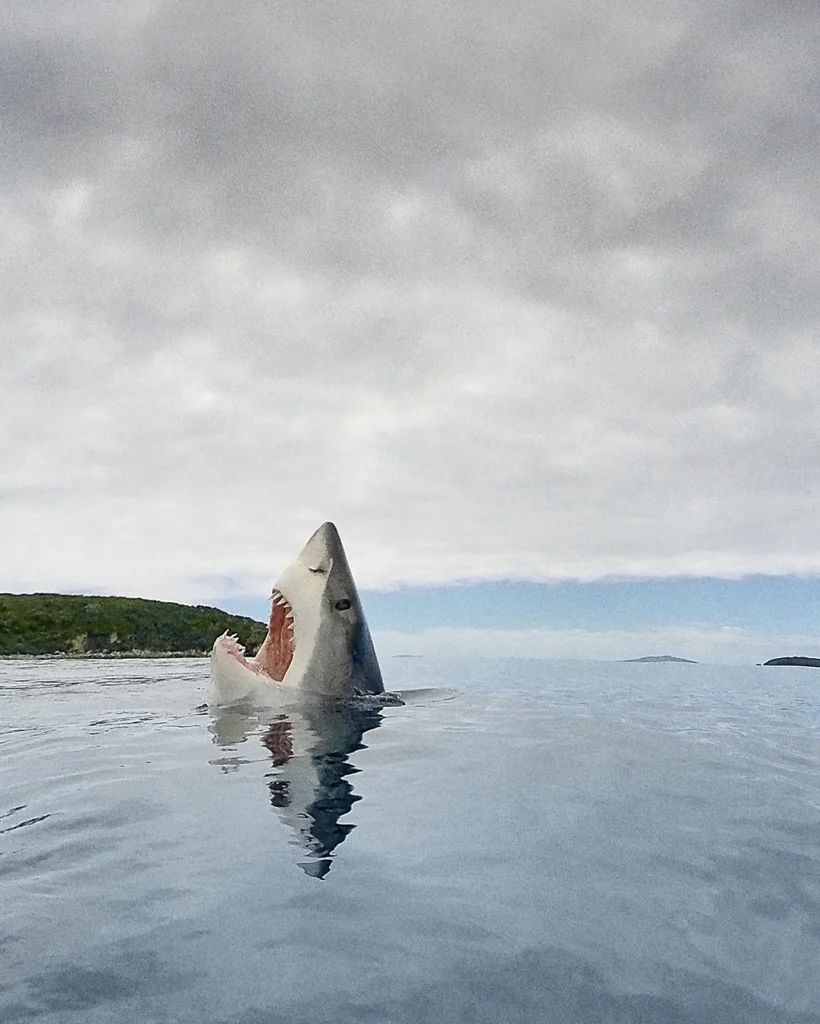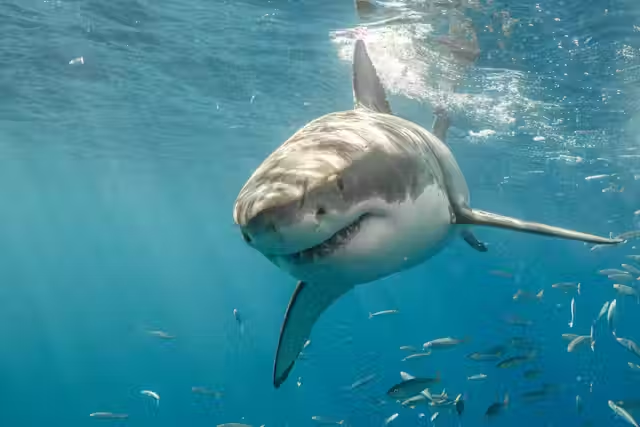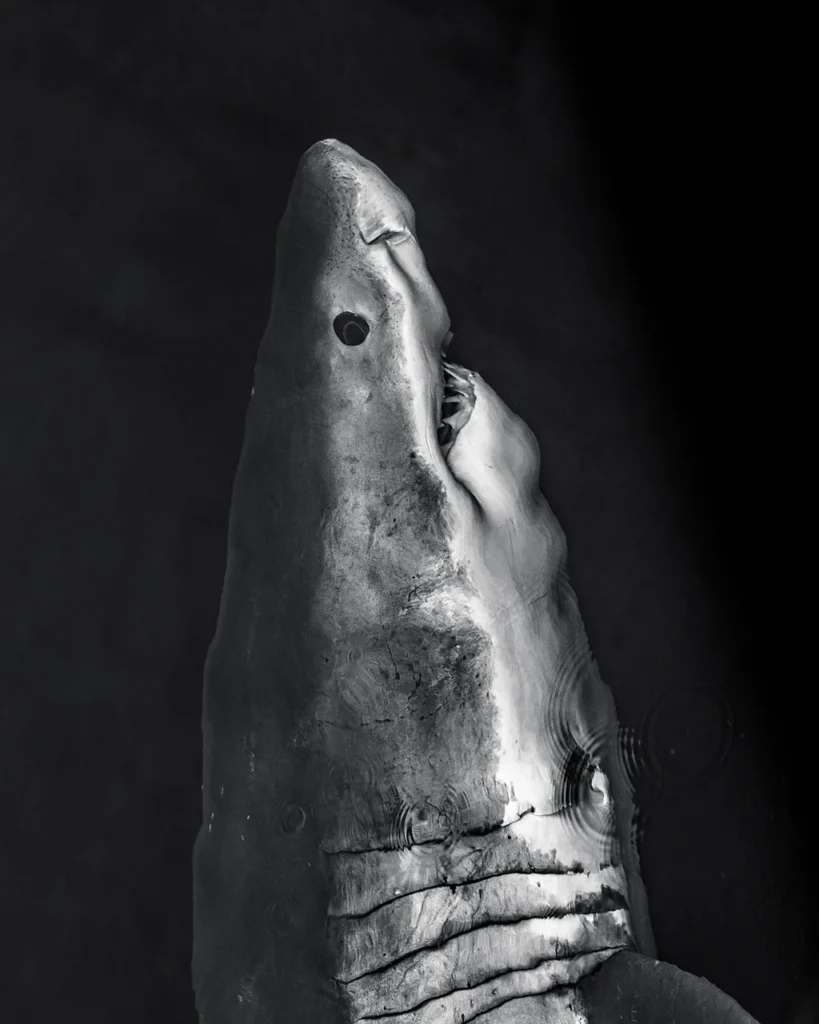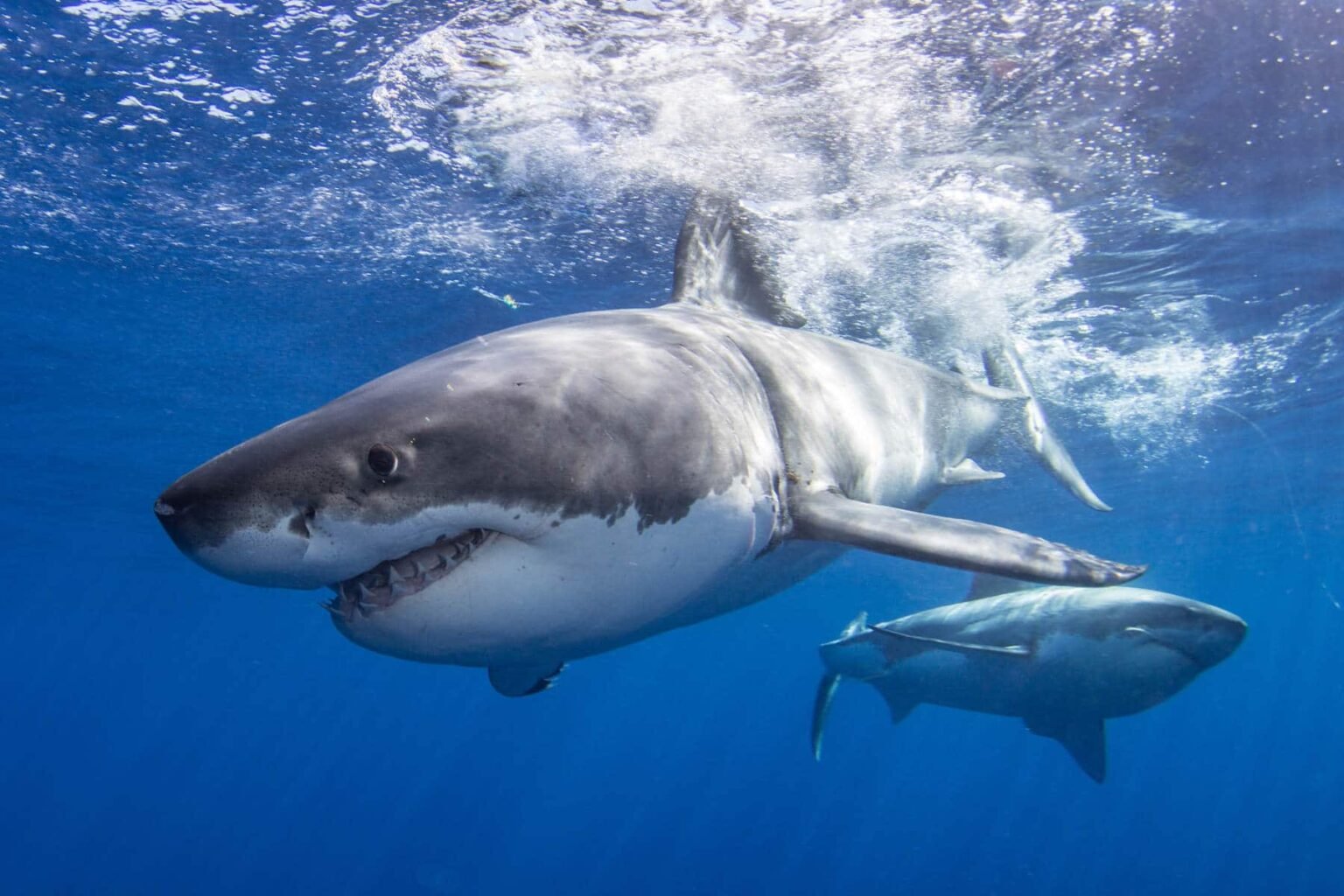The Legacy of Fear and How Great White Shark Photography Is Changing It
Great white shark photography is reshaping how we see one of the ocean’s most misunderstood predators. Fifty years after the release of Jaws, the species still conjures images of fear and danger. But a new wave of conservation-focused photographers is challenging that narrative, capturing the intelligence, grace, and ecological importance of great whites. Their powerful imagery replaces myth with reality and fear with respect.
From Tragedy to Advocacy: Mike Coots and His Mission in Great White Shark Photography

Hawaiian photographer Mike Coots was just 18 when a tiger shark attack left him without a leg. Instead of harboring fear, Coots returned to the ocean just a month later, armed with a prosthetic limb and a new mission. His work in great white shark photography has since gained international attention. Through striking images—like his viral shot of a great white spy-hopping—Coots showcases the animals’ curiosity, elegance, and misunderstood nature. This approach to great white shark photography challenges decades of fear-driven narratives, offering a more accurate and compassionate view of these apex predators.
A Softer Gaze: Sharks Through a New Lens
Coots’ now-iconic 2009 image of a spy-hopping shark off the coast of New Zealand challenged the traditional narrative. Rather than inspiring terror, the image sparked fascination. Comments focused on the shark’s apparent curiosity and intelligence. That moment was a turning point for Coots—proof that the right image could challenge the fear embedded in our cultural psyche.

Photographers like Kimberly Jeffries, George Probst, Caterina Gennaro, and Renee Capozzola have joined Coots in this visual revolution. Their close-up images focus on natural behaviors like schooling and cruising, often capturing sharks peacefully interacting with their surroundings. By rejecting bait-driven, aggression-staged imagery, they promote authenticity over spectacle.
The Shadow of Jaws: A Lasting Cultural Impact
Despite efforts to shift the narrative, the legacy of Jaws continues to cast a long shadow. Released in 1975, the film gave rise to a genre of shark-themed horror that portrays great whites as relentless killers. This narrative has persisted in movies from Deep Blue Sea to The Meg and more recently Under Paris, reinforcing a singular, threatening image of sharks.
Researchers like marine biologist David Shiffman and policy expert Christopher Pepin-Neff have documented the sociopolitical effects of sharkphobia. From exaggerated media reporting to fear-driven policy decisions, this misinformation hampers conservation efforts at a time when sharks are increasingly endangered.
Challenging the Narrative: Ethical Shark Photography
Jeffries, who shoots for National Geographic and consults on major film projects, emphasizes the need for ethical storytelling. Her photographs of great whites swimming beside dolphins or interacting with divers without aggression foster a sense of connection rather than fear. One of her most recognized images features Deep Blue, one of the largest recorded great white sharks, portrayed not as a monster but as a graceful marine presence.
Meanwhile, Coots explores portraiture using specialized lenses that reveal details often obscured in traditional shark photography—like the iris and expressive light in a shark’s eye. These elements humanize the shark and help shift perceptions from mindless predator to complex creature.
Shark Conservation in Crisis: Why Representation Matters
The stakes of this visual reframing are high. According to conservation organizations like Save Our Seas and the Shark Foundation, over 80 million sharks are killed each year, with 25 million from threatened species. Despite their rarity, shark attacks receive disproportionately high media coverage compared to the minimal attention given to conservation issues.

Studies show that even music can influence shark perception. One 2016 experiment found that viewers who watched shark footage set to ominous music rated the animals more negatively than those who saw the same footage with uplifting music. Public fear leads to apathy, allowing destructive practices like finning and by-catch to go unchecked.
From Screen to Policy: The Real-World Effects of Shark Representation
Misrepresentation in media doesn’t just shape public opinion—it affects policy. Politicians often rely on fear-driven narratives to justify shark culling or neglect marine protection. Pepin-Neff’s research suggests that even when public attitudes are more sophisticated, political rhetoric clings to outdated tropes.
Entertainment mediums such as Shark Week have come under fire for promoting sensationalist content. A 2022 study led by Lisa Whitenack found that 74% of episodes included fear-mongering language. These portrayals overshadow the critical ecological role sharks play in maintaining marine balance.
A Changing Tide: Public Engagement and Education
The tide is slowly turning. The Ocean Lovers Festival in Australia now hosts the Jawsie Awards, which satirize fear-mongering media about sharks. Photographers and conservationists alike are gaining platforms to tell more truthful stories. Jeffries observes a growing appetite for content that is respectful and fact-based.
Mike Coots’ own images, such as his 2016 return to tiger sharks—the species that took his leg—demonstrate a full-circle journey from fear to compassion. These photos show not just a subject but a philosophy: that we protect what we understand, and we fear what we don’t.
The Future of Shark Storytelling
The movement to reframe the narrative around great white sharks is gaining momentum. With every honest image captured by ethical photographers, we take another step away from myth and toward coexistence. This shift isn’t just about sharks—it’s about reshaping our relationship with nature and correcting decades of sensationalism.
By continuing to support balanced representation and promoting shark conservation, we can ensure that the next generation knows sharks not as villains, but as vital, majestic stewards of the sea.




